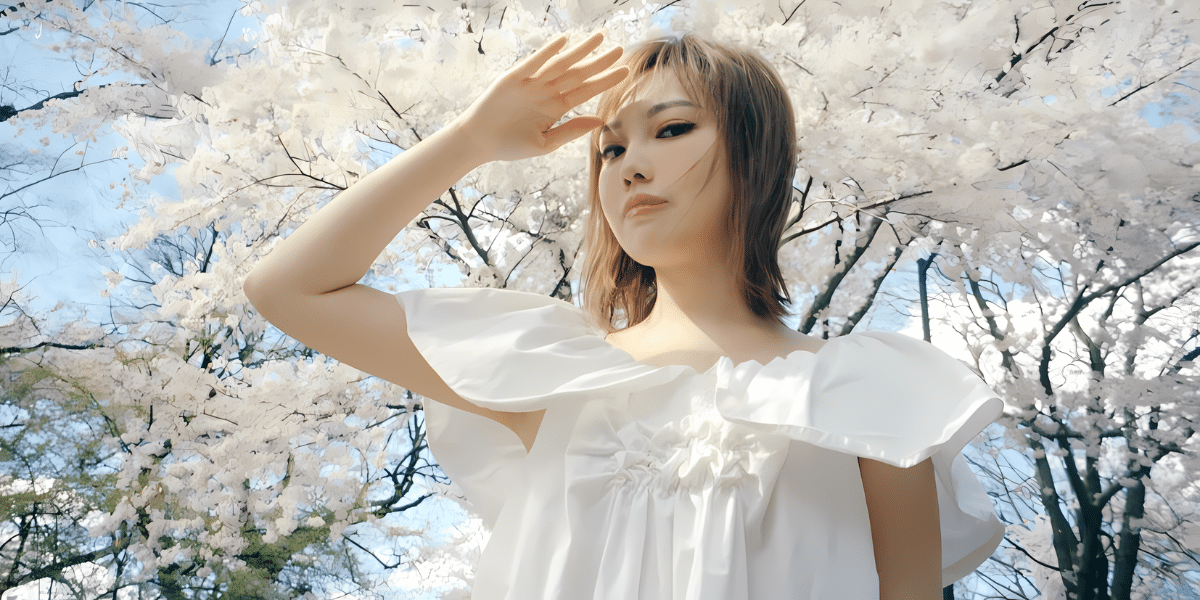By: Ellison Blake
In the ever-evolving landscape of design and technology, one name shines brightly among the rest – Shang Jiang. With a Bachelor of Fine Arts in Design and Technology from Parsons School of Design and multiple award-winning projects, Shang has swiftly become a force to be reckoned with in the industry. Recently, she was recognized with The International Design Awards (IDA) for her work “Cofe+ robot café kiosk.” Shang sat down to talk about her work as well as her insights into the craft, unveiling her passion for pushing the boundaries of what is possible.
1. Shang, it’s great to finally have a chance to chat with you! Please begin by introducing yourself to the audience. Who are you, and how would you characterize yourself as an individual and an artist?
Shang Jiang: I am a multidisciplinary designer, mainly focused on visual and UX/UI design. As an individual, I am curious, driven, and analytical. I have always had a keen eye for detail and a love for problem-solving, evident in my UX/UI design journey. I focus heavily on user experience, research, and visual design. To me, every project is an opportunity to better understand the user’s needs and to make their digital interactions more intuitive, more rewarding, and more engaging.
As an artist, my work is marked by a passion for graphic design, illustration, web design, 3D modeling, graphic motion, and animation. I see technology as a tool and a canvas – a means of exploring new artistic horizons and pushing the boundaries of what’s possible.
2. What makes a good design?
Shang Jiang: I believe design should serve a purpose – it should make life easier, more enjoyable, and more beautiful. To achieve this, good designs must be deeply rooted in understanding the user’s specific needs. As such, the cornerstone of good design, in my view, is a user-centric approach. Every design decision must begin and end with the user in mind. I invest a significant amount of time and effort into user research, gaining a comprehensive understanding of their needs, behaviors, and pain points. This thorough research forms the design’s basis and helps me address real-world problems effectively.
Alongside this, I believe that aesthetics cannot be overlooked. A design that is pleasing to the eye enhances the user’s experience and engagement, adding an essential layer of desirability to the product.
3. Shang, your portfolio showcases a range of interests and skills, including graphic design, illustration, web design, 3D modeling, and more. How do you leverage these diverse skills in your work, and how do they contribute to your ability to create compelling and innovative designs?
Shang Jiang: My diverse skills contribute to a holistic approach to design, enabling me to create designs that are not only visually compelling but also user-centered, interactive, and innovative. This combination of skills enables me to push boundaries and consistently deliver designs that are both effective and engaging.
For instance, I put a significant portion of my UI/UX skills to use for building intuitive and efficient user interfaces. Additionally, 3D modeling offers an extra dimension to my designs and allows me to enhance the user’s experience, making it more immersive and interactive.
4. How do you actively seek professional growth and learning opportunities?
Shang Jiang: As a firm believer in the principle of lifelong learning, I am committed to consistently seeking opportunities to grow and evolve professionally.
Online platforms also offer a wealth of learning opportunities. I frequently take advantage of online courses, webinars, and tutorials in areas such as UX/UI design, coding, 3D modeling, and AR/VR. This continuous self-driven learning enables me to deepen my existing skills and explore new ones.
Networking is another important aspect of my professional growth. By engaging with other professionals in the industry, I can gain different perspectives, learn from others’ experiences, and discover new approaches that can enhance my work. Feedback from colleagues, clients, and users also provides invaluable insights that contribute to my growth as a designer.
5. Do you collaborate with other designers in your creative process to gather diverse ideas?
Shang Jiang: Absolutely. I consider collaboration an essential tool in creating innovative, inclusive, and effective designs. It fuels the creative process, fosters a broader understanding of the project, and ultimately leads to a more comprehensive and thoughtful end product. For instance, during the XYG Window Project, I collaborated with other designers to research user needs and pain points, brainstorm and sketch ideas, create prototypes, and gather feedback. As a result, we utilized our diverse ideas to craft an intuitive and engaging design using the principles of yin and yang.
6. What were the memorable challenges and breakthroughs for you on the award-winning XYG Window Project?
Shang Jiang: The most memorable challenge of the XYG Window project was balancing traditional Chinese elements with modern design. The breakthrough came when we simplified the intricate seal script into a sleek, modern form. With the team effort, the project won multiple world-renowned awards, such as the Red Dot Award and A’ Design Award.
7. How did you balance traditional Chinese elements with modern simplicity in the XYG Window design?
Shang Jiang: To apply Chinese elements with modern simplicity, we took inspiration from ancient seal fonts and Suzhou’s window designs, but we streamlined these to fit a contemporary context. We used traditional Chinese colors for a cultural touch while maintaining modern aesthetics.
The unique idea of using the yin and yang spaces from the logo as navigation buttons added a modern interactive layer while staying true to Chinese tradition. This fusion of old and new provided a rewarding balance, making the XYG Window project both challenging and an achievement.
8. For you, what are the rewarding things about being a designer?
Shang Jiang: There is never a dull moment in design. There is always something to learn, a new trend to explore, and people to collaborate with, which keeps things fresh. Most importantly, the design allows me to have a direct impact on people’s lives – it’s a thrill to see users interact with and enjoy my designs – it’s the ultimate ‘yes, I nailed it!” moment.
Published by: Khy Talara

















